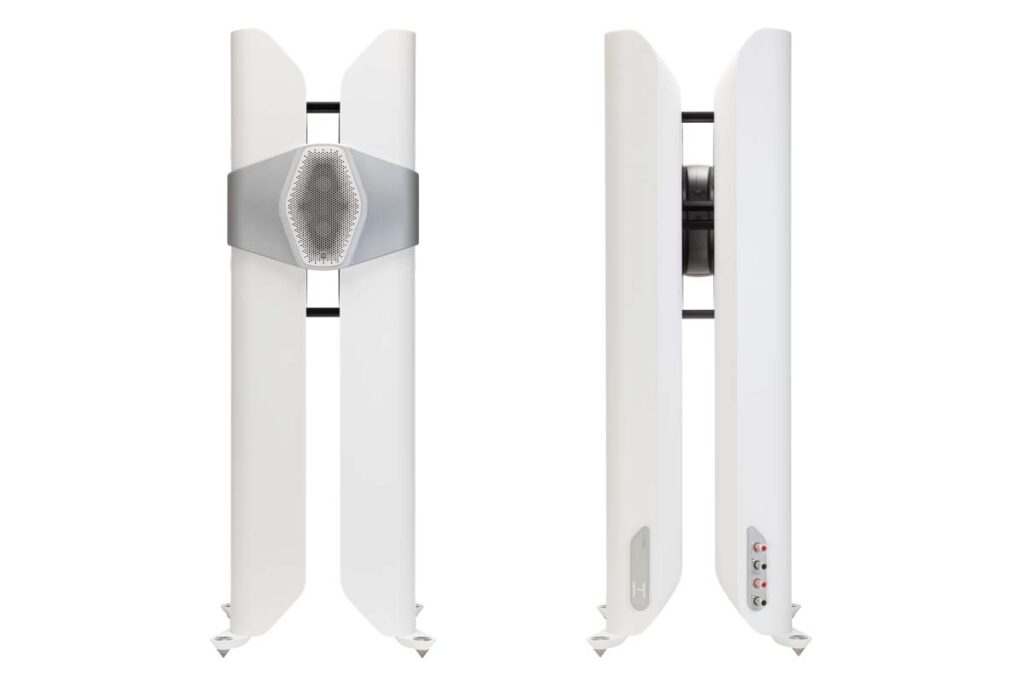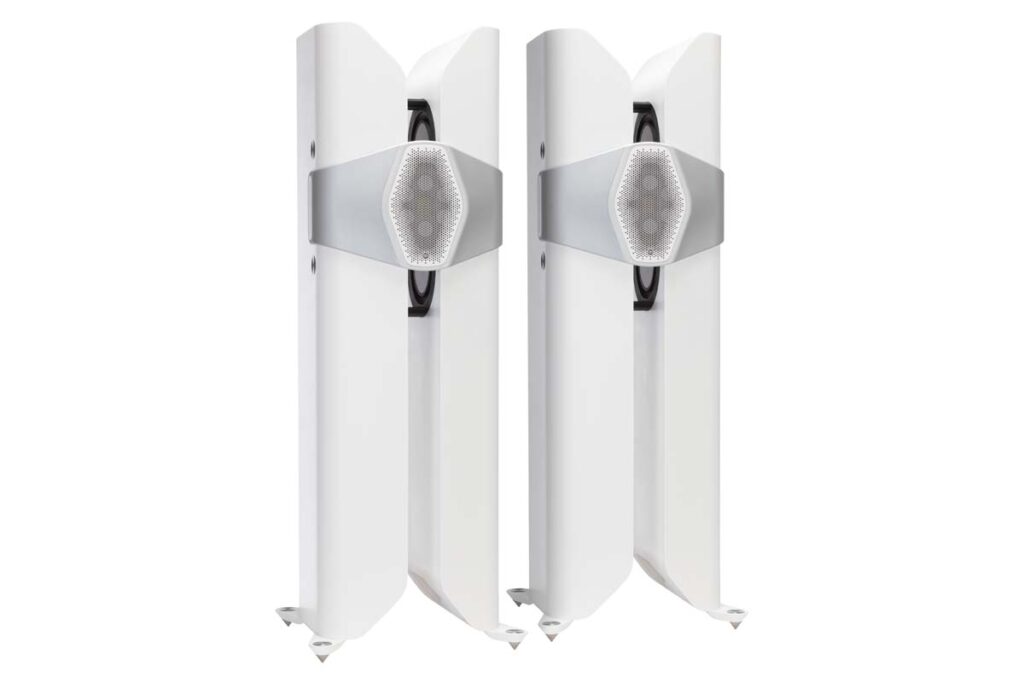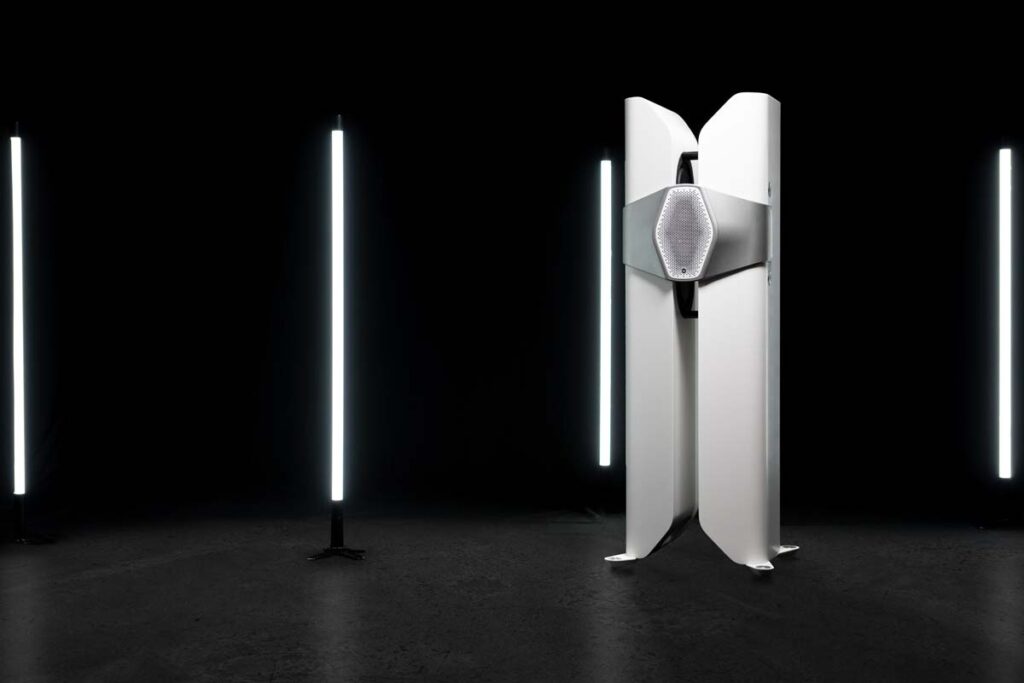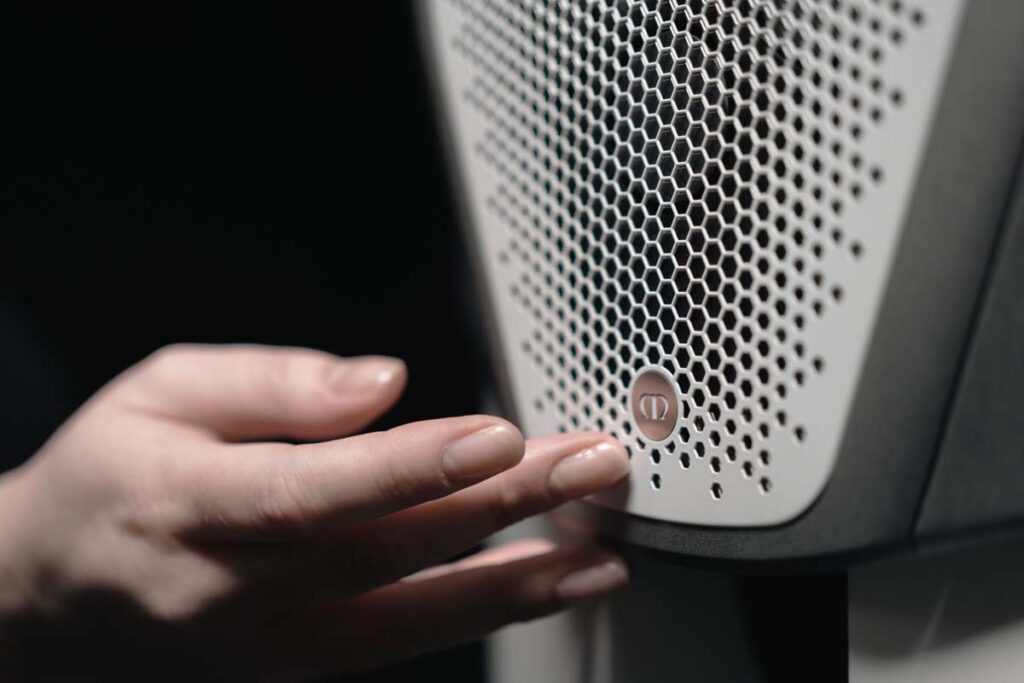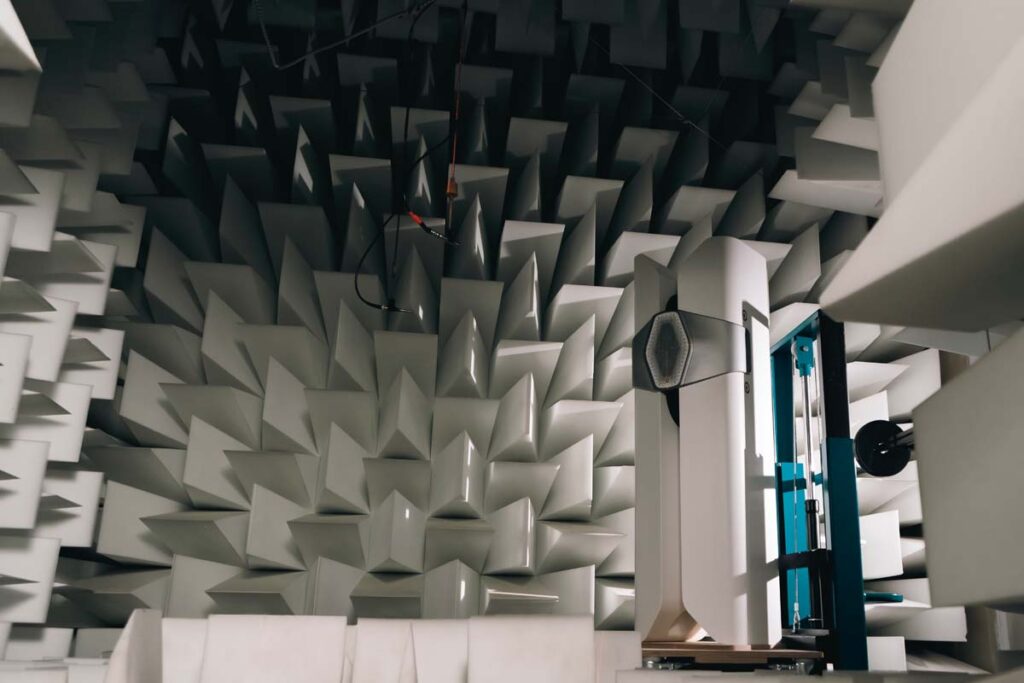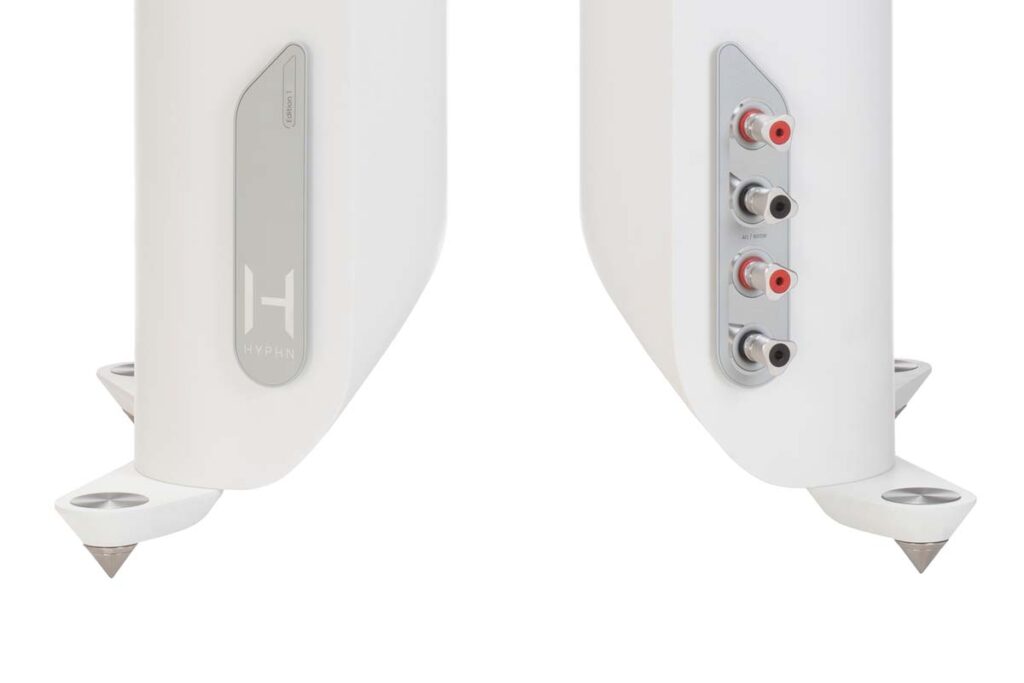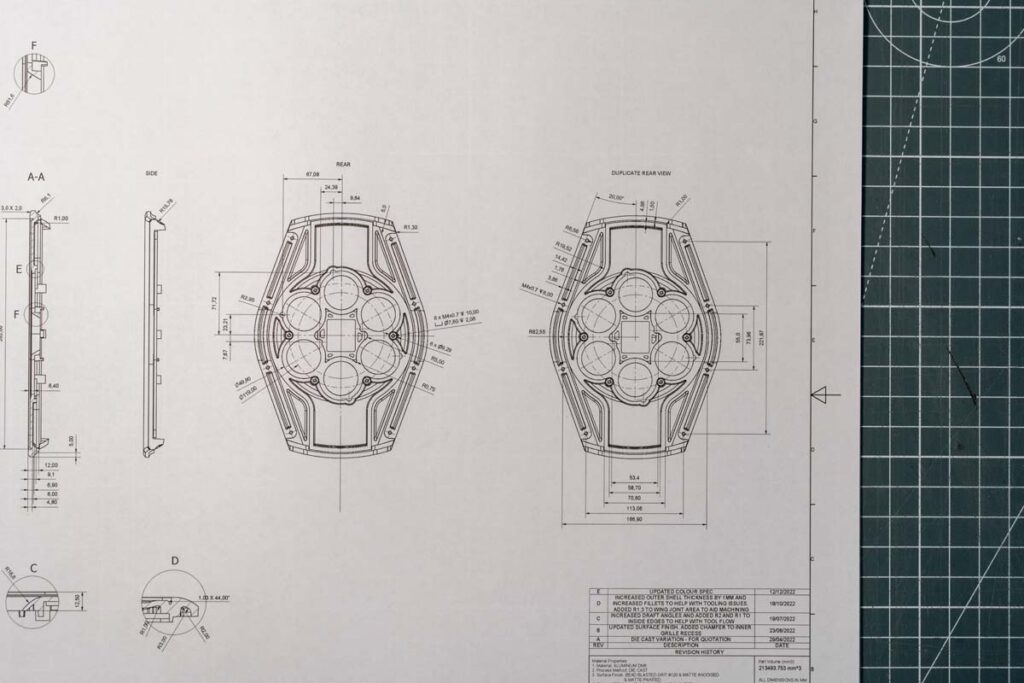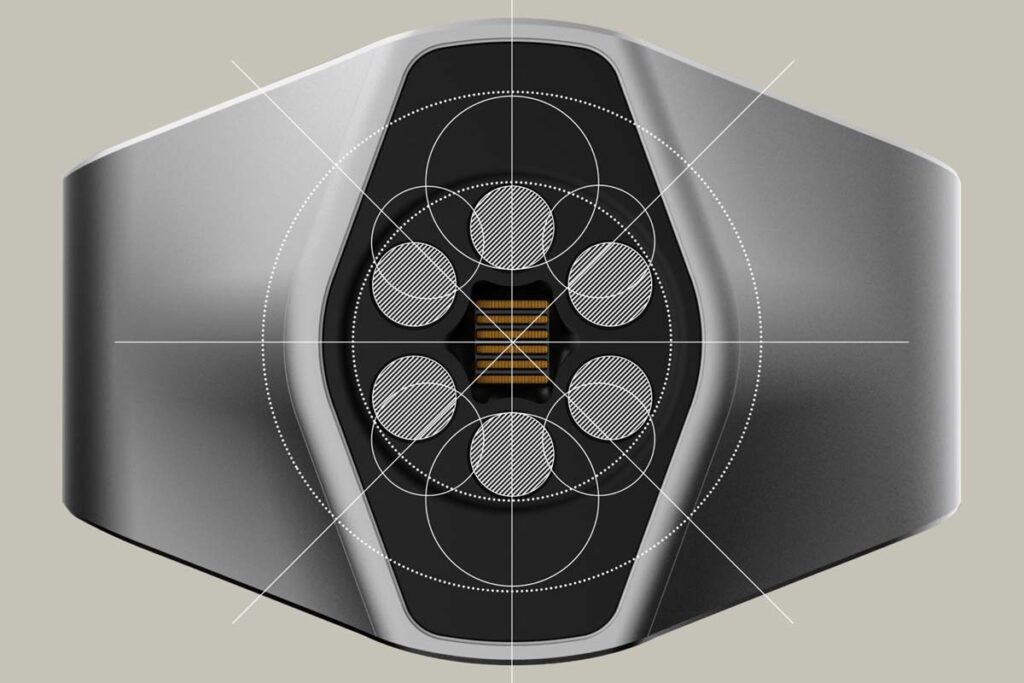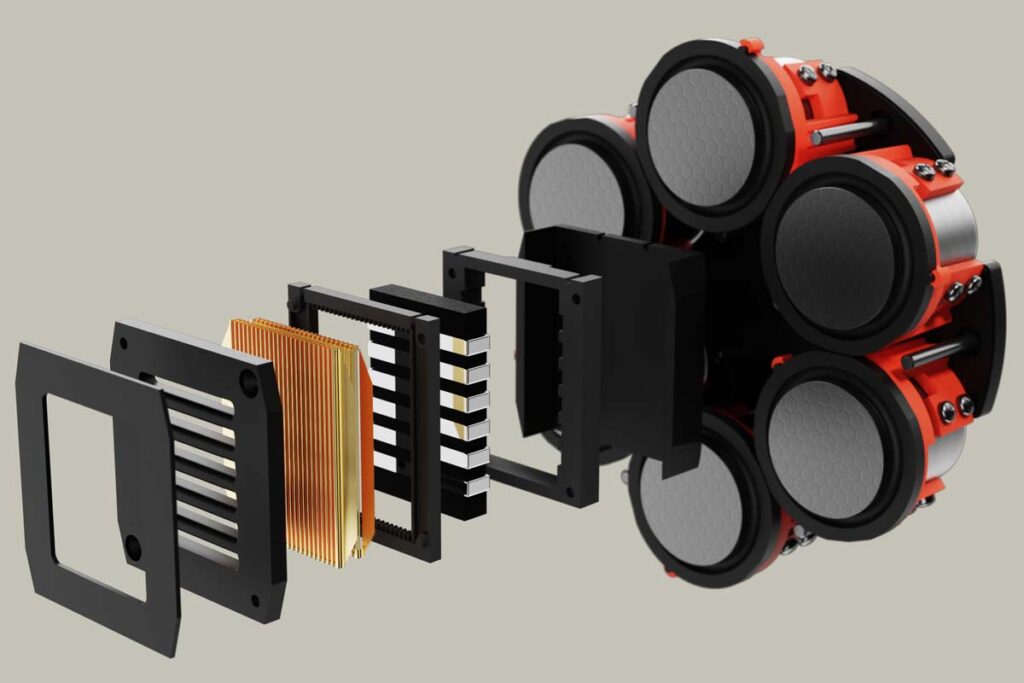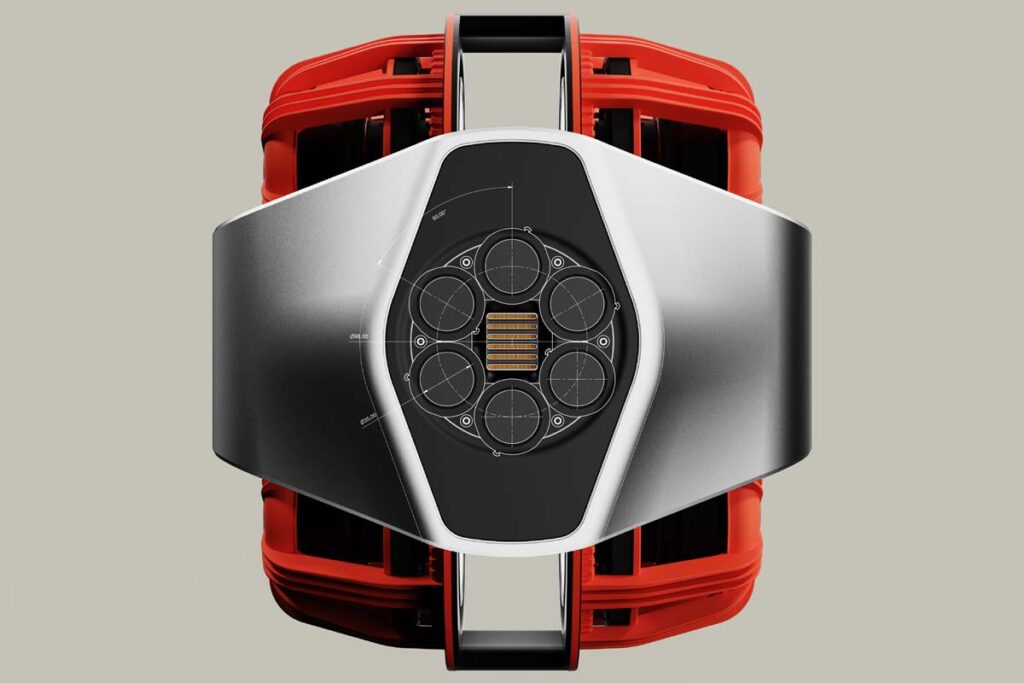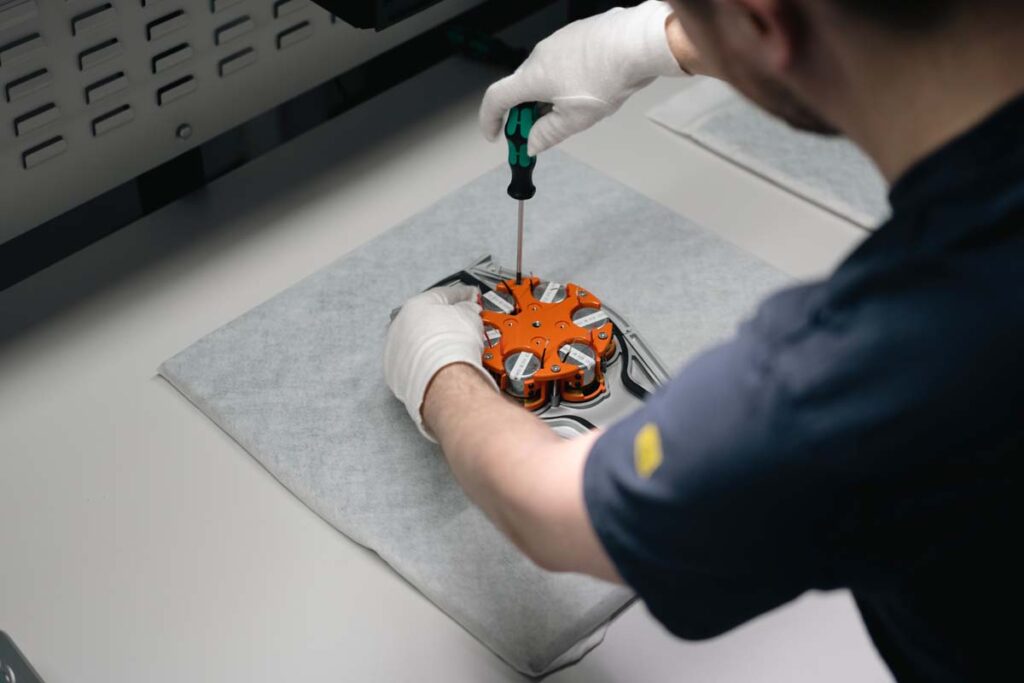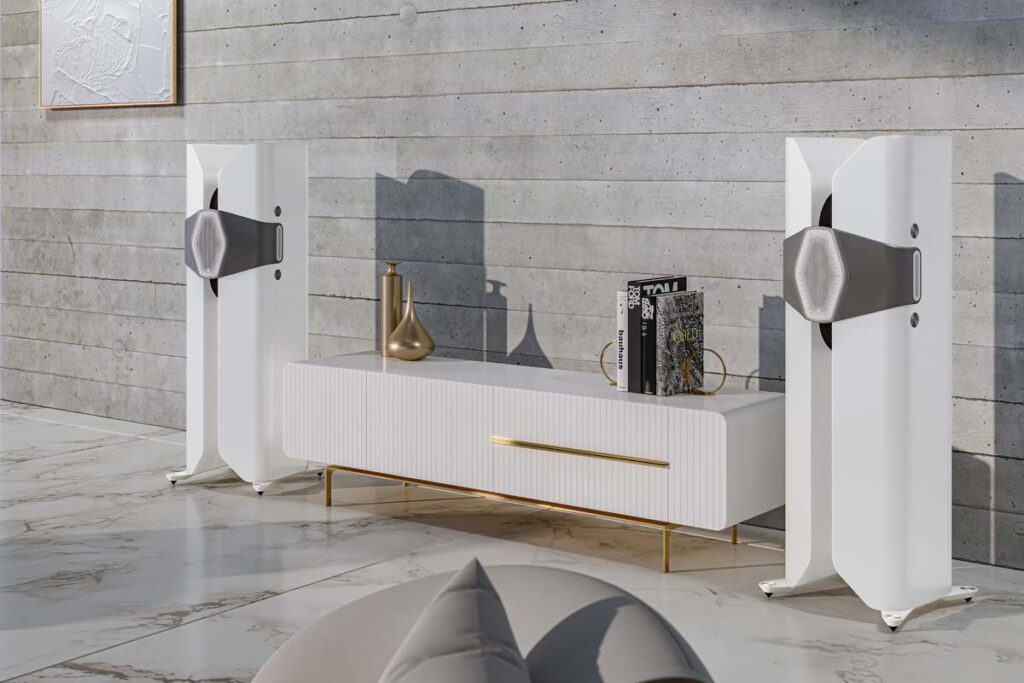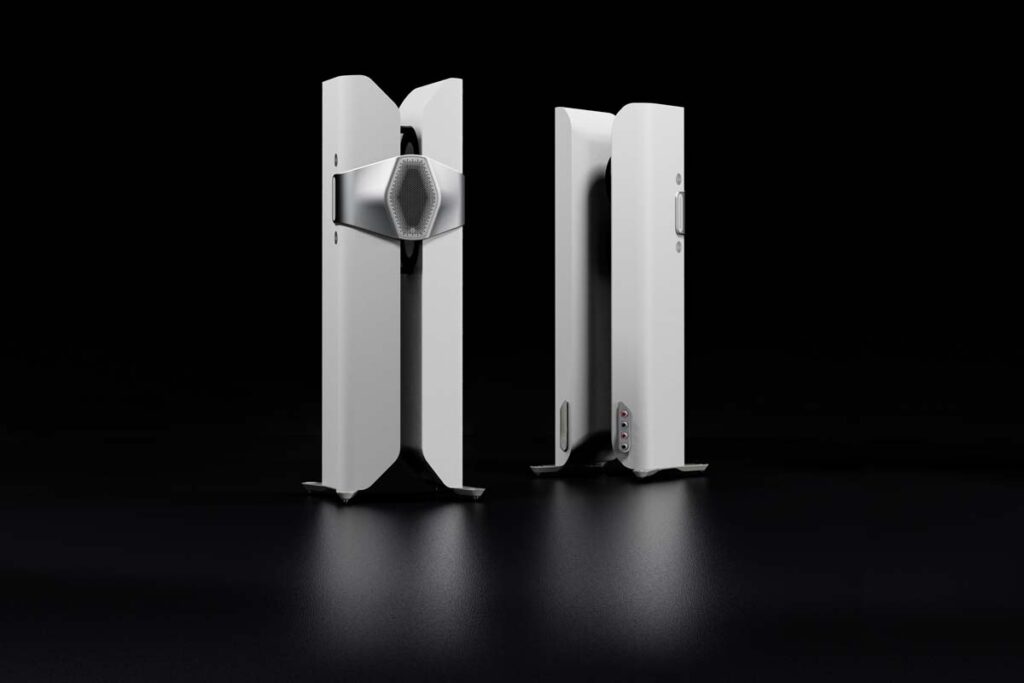In a hotly contested market, doing without a flashy appearance is a luxury that you have to be able to afford. Monitor Audio has been quietly and successfully doing just that for decades now. But just so no one gets any wrong ideas, they’ve now built the Hyphn to show us what’s what – and show us what’s what it does!
What do we expect from our loudspeakers? First of all, good sound. Workmanship and appearance must also be right, after all, we are not only investing a lot of money, but usually also space – it’s not for nothing that we like to talk about sound furniture when we talk about loudspeakers. Monitor Audio confidently ticks all these boxes: the British company has always been able to impress with its sound; under the leadership of Michael Hedges, the tonal character has changed significantly, but it’s no less engaging than before. We are also impressed by the finish and look every time – I particularly like the fact that they look great without being obtrusive. The balancing act between classic and contemporary works brilliantly, the transducers complement the interior instead of dominating it, and as if by chance, music comes out of them with impeccable fidelity. Monitor Audio is constantly researching new, better solutions and pushing the performance of its speakers ever higher, without the technology ever coming to the fore in the end product – rather, it works unobtrusively in the background to ensure that no questions remain unanswered in terms of sound. This is exactly how it should be.
The curse of the invisibility cloak
Ironically, however, this creates a small problem: the whole thing works so well that it is easy to overlook just how technology-driven the manufacturer is. There are heaps of hi-fi manufacturers who have made a name for themselves with some sort of technological unique selling point and have cultivated this over years and decades with iterative refinements. There is nothing fundamentally wrong with this – after all, loudspeaker construction is a fairly mature discipline and has long since reached a point where true revolutions are hardly to be expected anymore. Nevertheless, Monitor Audio goes a significant step further than many others: The basic design philosophy that runs through the entire history of the company is expressed in a series of relatively unspecific features such as the fundamental reliance on hard cones. When it comes to the actual implementation, however, no stone is left unturned from generation to generation. For example, can you still remember the “dimples” on the midrange and bass drivers of the Platinum 2G series? A clever design, as it not only improves the structural integrity of the cone, but also increases its overall surface area as a side effect. If Monitor Audio had taken up the same concept again for the successors and developed it further with improved materials and recalculated geometry, we would all have been perfectly happy. But in the eyes of the busy Brits, that wouldn’t be a big enough leap – so they unceremoniously relegated the “golf ball” texture to the annals of company history and developed a completely new composite membrane with RDT III (Rigid Diaphragm Technology), in which a honeycomb-shaped Nomex core structure supports a metal diaphragm that can be made so wafer-thin that you can see through it against the light.
In classic British understatement style, all this innovation is packed into beautiful enclosures that refrain from screaming “Technology!”, so that the concentrated development expertise is audible, yet remains largely visible. The company’s 50th anniversary has therefore been taken as an opportunity to create a flagship that does more than just set a visual accent – the study presented last year as Concept 50 is a halo model, a figurehead that is intended to make the technical finesse of Michael Hedges’ team readily visible while at the same time pointing out the course the brand intends to take in the future. A “statement of intent”, as the company calls it internally. And the best thing about it: to make it clear that the whole spectacle is more than just hot air, the super loudspeaker was intended for later series production right from the start.
Pure and undiluted
Now we’ve seen it all to often in the automotive industry: At motor shows, Manufacturers love to pique our interest with outrageous design studies – but when it comes to series production, the decision-makers often seem to lose their courage and we end up with rather stale would-be exotics – not so with Monitor Audio! The name may be different now, but the speaker – now christened – “Hyphn” is practically indistinguishable from the sound sculpture presented last year. And the visual design makes the intention more than clear. In fact, the design process was driven by two requirements: Firstly, they wanted to create a loudspeaker that didn’t look like one, and secondly, it was explicitly about finding a design that focused on making the technology visible – form does not merely follow function here; it lifts it onto a pedestal, elevating it to art. They went so far as to take only the drivers themselves as a starting point and place them in their ideal positions in virtual space. From this crystallization core, an acoustically optimal housing was then allowed to grow until it made contact with the floor. And indeed, the shape of the state-of-the-art sound transducer is so focused and displays its technical functionality so unabashedly that one is almost tempted to speak of “statement porn”.
As technology never stands still at Monitor Audio, hardly anything has been left untouched on the Hyphn over the past year. Visually seemingly unchanged, the enclosure has undergone another major overhaul. For example, the wall thickness of the acrylic-based artificial stone on the driver side of the two main columns that house the woofers has been increased from twelve to 24 millimetres. The symmetrical push-push arrangement ensures that the forces transferred into the cabinet cancel out anyway, but it was important to the developers to eliminate every last ounce of vibration. The eponymous bridge between the legs – known as a “hyphen” in architecture – which supports the mid-high module equally underwent modifications: In the Concept 50, it was still milled from an aluminum billet; for the Hyphn, Monitor Audio manufactures it using an additive process that is extremely time-consuming.
The “M Array” mid-high unit is likely to be the star of the show. Here, too, the idea is not new, but the implementation is quite unique: six midrange drivers, each just two inches in diameter, are grouped around the well-known in-house designed AMT tweeter. Like the woofers, they are based on RDT-III technology, but here Monitor Audio uses flat membranes that are particularly lightweight. Together they have enough surface area to couple cleanly to the woofers. At the same time, however, they can also reproduce unusually high frequencies for midrange drivers without breaking up, thus providing plenty of headroom for the transition to the tweeter. Basically, the array works like a coaxial driver, but cleverly avoids one of its inherent problems: Since the midrange cone inevitably influences the internal dome tweeter, intermodulation distortion occurs. The tweeter in the mid-high unit of the Hyphn, however, can go about its work completely undisturbed; any phase misunderstandings between the individual drivers are effectively eliminated by the specially calculated two-layer hex lattice, which at the same time optimizes the dispersion characteristics.
I openly admit: Even though the look of the novel loudspeaker at last year’s HIGH END put a big grin on my face, I initially had some doubts as to whether the design could work in an inhabited listening environment. But any worries I had were quickly dispelled as soon as the spaceships landed in our listening room. I need to make one thing abundantly clear: there is absolutely no point trying to blend them in with the living environment. Once you place them in a room, they own it. That’s ok, though: the home owner is still free to go in and out at will and without prior notice – and he won’t get tired of these gems any time soon, either.
Straight as an arrow right into the music center
Visually, the Hyphns took less than five minutes to captivate us, but in terms of sound it took a little longer – although this was due to the fact that we were the first to put our test pair into operation. All skeptics who don’t believe in breaking in speakers should definitely experience the Hyphn – I can’t think of another speaker that changes so dramatically in the first 48 hours. Immediately after plugging them in for the first time, we were a bit confused: there was absolutely nothing of the new “crispness” of Monitor Audio to be heard; nor could I detect the slightly rough and stiff character that I usually get from brand new loudspeakers. On the contrary, the top end sounded quite muffled and generally a little undefined. Of course, we weren’t worried – it’s nothing new to us that top-notch loudspeakers especially need a good shake down of their diagrams before they can perform as they should.
After leaving it to musically talk to itself in our listening room over the weekend, it has obviously found its voice: Everything we had heard on Friday seemed to be the opposite on Monday. The bass was so crisp that I instinctively knelt down in front of the loudspeaker to feel for the reflex port – the attack was so lightning-fast that I almost suspected a sealed box. In general, as with the new Platinum models, Michael Hedges’ signature can be clearly heard here, but the Hyphn just offers even more of it. The bass is just as tight, but with much more authority, the resolution is simply superior – especially at the beginning of “Old Country” by Dianne Reeves (The Grand Encounter), the subtle vibrato of the bowed cello is wonderfully clear and distinct. Above all, however, I am impressed by how tonally natural and supple the Hyphn remains despite all the speed. It’s almost a little amusing how the Hyphn doesn’t “prettify” even less audiophile recordings, but ennobles them with its resolution to an unexpectedly rich sound experience, as long as the recording isn’t too gritty. In “I Don’t Need Signal” by Glim Spanky (Into The Time Hole), for example, the kick drum, placed nicely far back, is just as mushy as it is captured on the recording. Meanwhile the M Array takes the dense flurry of undefined sound effects – really just intended to serve as an undefined acoustic background – and effortlessly resolves it fiber by fiber with absolute naturalness, assigning each element its fixed place on the stage. Nevertheless, all this information always remains exactly what the sound engineer intended it to be: spatially as well as musically in the background behind the main protagonists: Remi’s voice and Hiroki’s guitar.
An ultra-high-end loudspeaker from Monitor Audio is of course a statement – and the Hyphn performs excellently in this environment. However, if you leave it at that, you’re actually missing the point: this super speaker shows what Monitor Audio can do technologically, regardless of cost or any other limitations, and gives the brand the “street credibility” it deserves. However, this in no way means that the British have lost their grip and want to drift into ever higher price spheres – quite the opposite: much of what we are now seeing in the Hyphn will gradually make its way downwards – as is already happening to some extent in the Platinum series. Above all, however, buyers of the “normal” Monitor Audio loudspeakers will be able to lean back in their armchairs even more proudly than before, knowing what kind of stable the horses in their own living room were bred in.
Floorstanding loudspeaker Monitor Audio Hyphn
Concept: passive 3-way floorstanding loudspeaker | Configuration: 1 x MPD III tweeter, 6 x 2″ RST III midrange drivers, 4 x 20 cm woofers | Frequency response: 18 Hz to 60 kHz | Crossover frequencies: 350 Hz; 3.7 kHz | Nominal impedance: 4 Ω (minimum: 3.5 Ω at 2.2 kHz) | Sensitivity (2.83 V/1 m): 86 dB | Maximum sound pressure level: 129 dB | Rated power handling: 800 W | Special features: Cabinet construction made of acrylic-based artificial stone, concentric mid-tweeter array, push-push bass arrangement | Finishes: Pure Satin White, Matte Black, Matte Heritage Green | Dimensions with stand (W/H/D): 50/139/52 cm | Weight: 107 kg | Warranty period: 5 years | Pair price: around €82,500
Der Beste Klang
Berliner Straße 3
23795 Bad Segeberg
Accompanying Equipment:
CD players: Audio Note CD 3.1x, Ayon CD-3sx | Streamers/mediaplayers: Lumin P1, Aavik S-580, Soulnote Z-3 | Preamplifier: Electrocompaniet EC 4.8 Mk II | Power amplifiers: Luxman M-10x, Burmester 216, Electrocompaniet AW 800 M | Integrated amplifier: Aavik I-580 | Speakers: Wilson Audio Sasha DAW | Cables: Ansuz, WestminsterLab, HMS | Racks: Finite Elemente, Creaktiv


